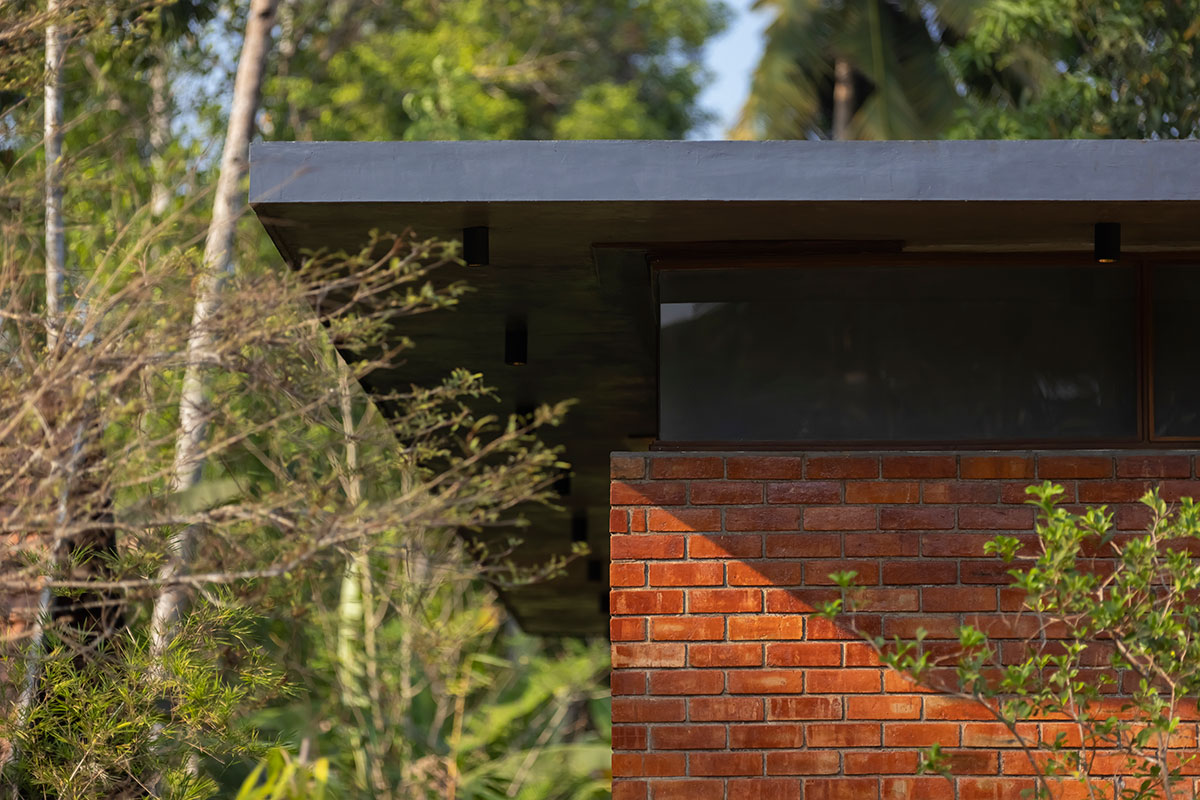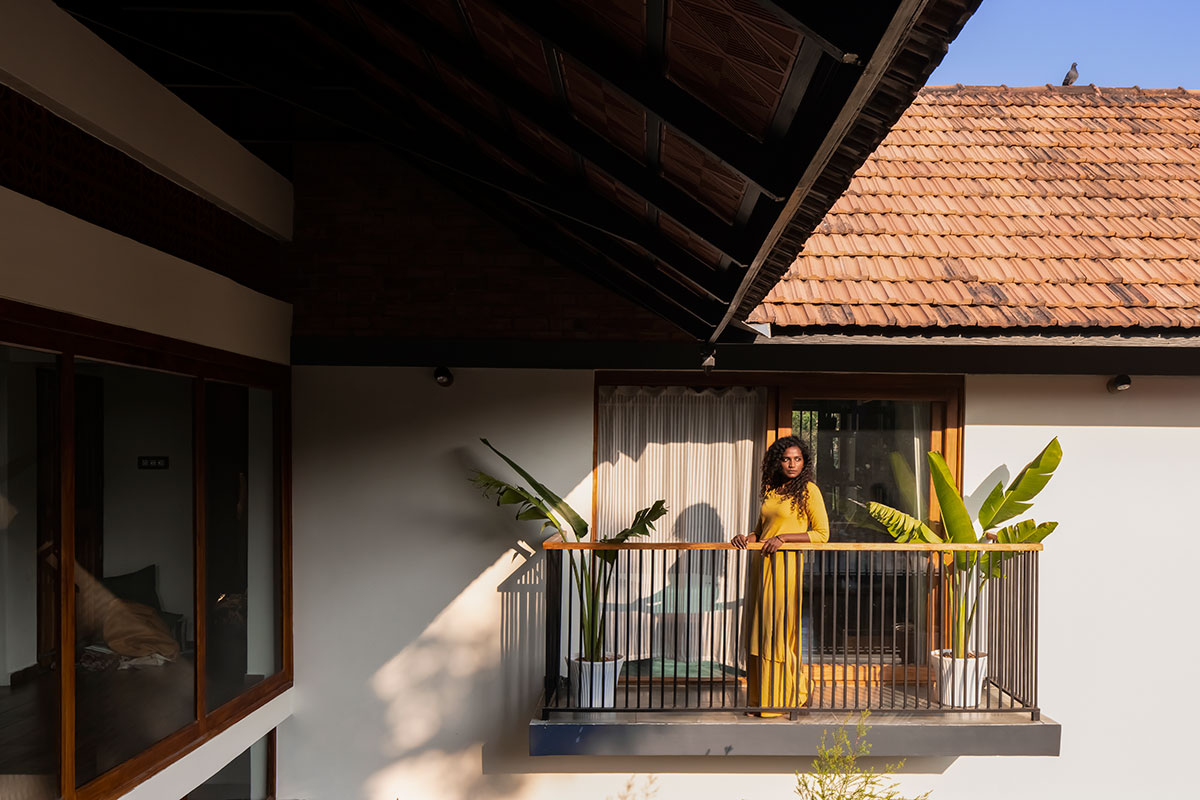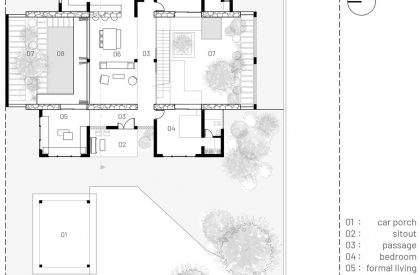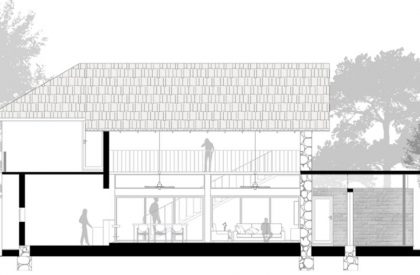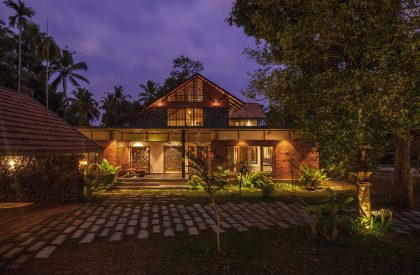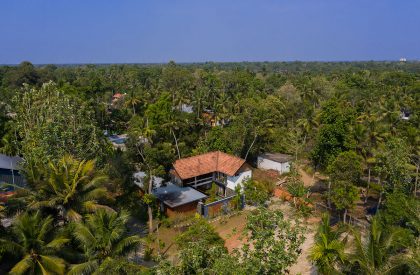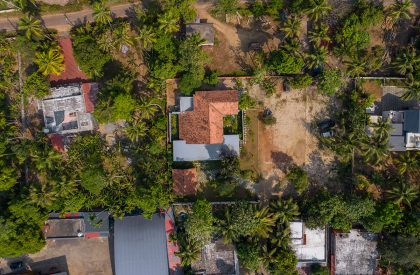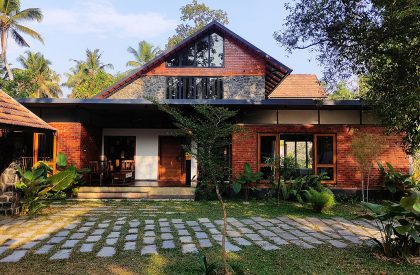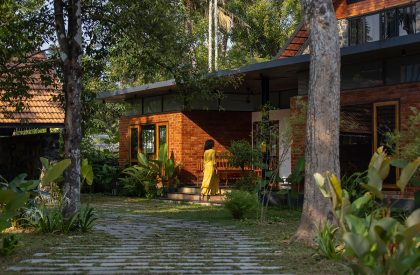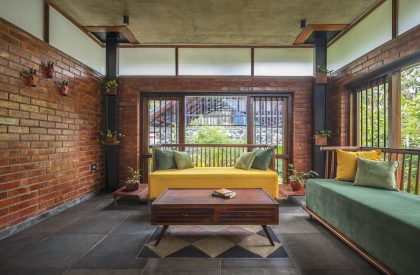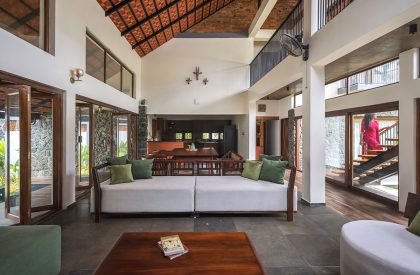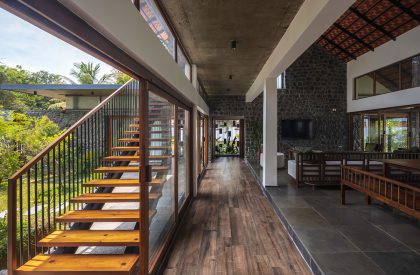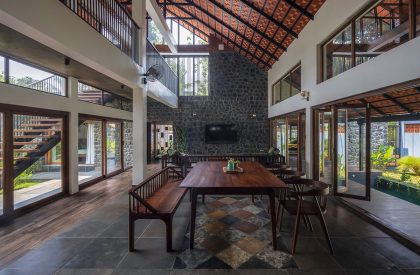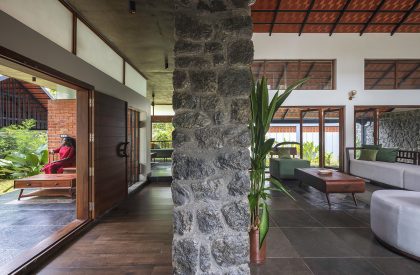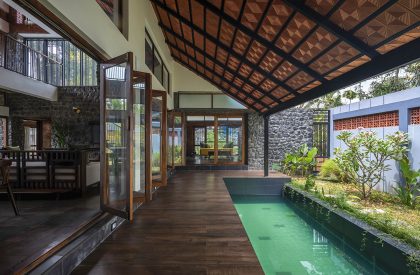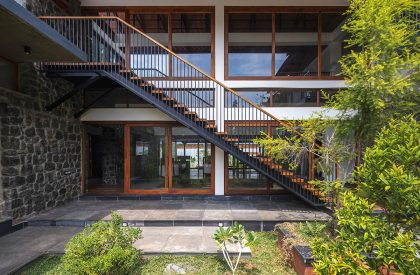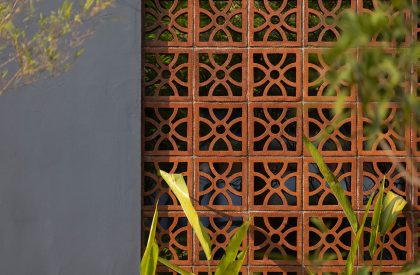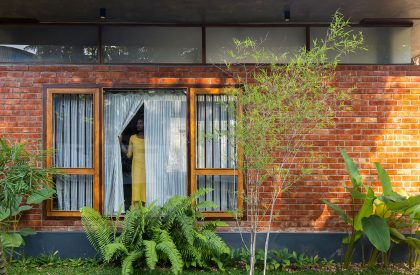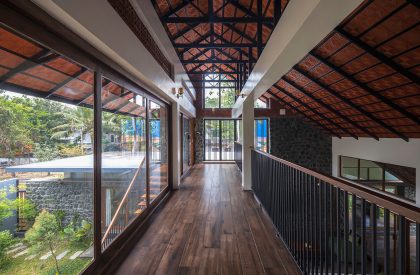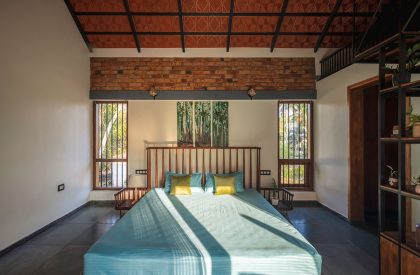Excerpt: Khayaal designed by 7th Hue Architecture Studio began as a direct response to the prevailing climatic and geographic conditions. This in turn translated as a re-interpretation of the nalukettu typology, where instead of a courtyard at the centre, two courtyards adjoin the central core formed by living-dining spaces. It has been designed to attain strong visual connectivity throughout while at the same time keeping the public space at bay.
Project Description

[Text as submitted by architect] “Khayaal” is a romantic poetry that allows freedom of expression, which is exactly how the design grew to fruition.
Humble yet headstrong, Khayaal stands proud amidst a lush green landscape, much like a poem waiting to be read. It lends itself to a tropical contemporary style of architecture, imparting more livable spaces with ample natural light and ventilation. It becomes coherent with the site through adaptive design, paying utmost respect to its context and climate.
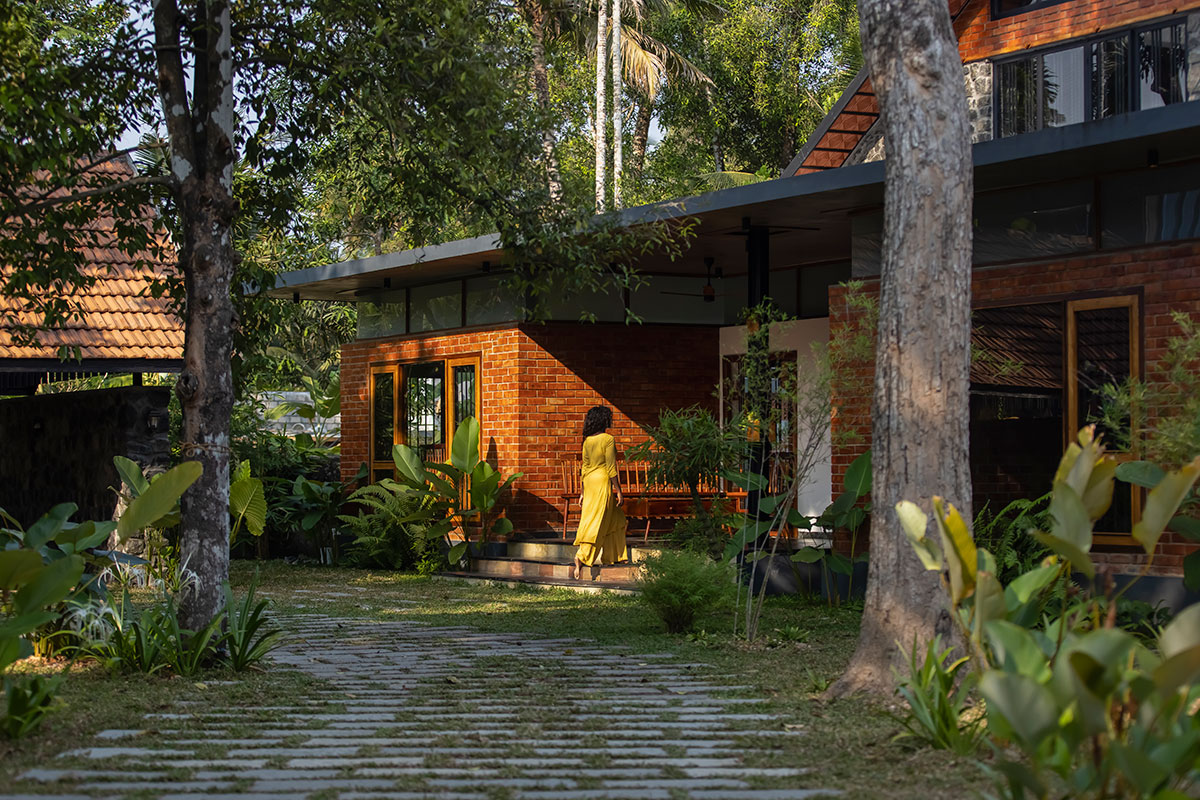
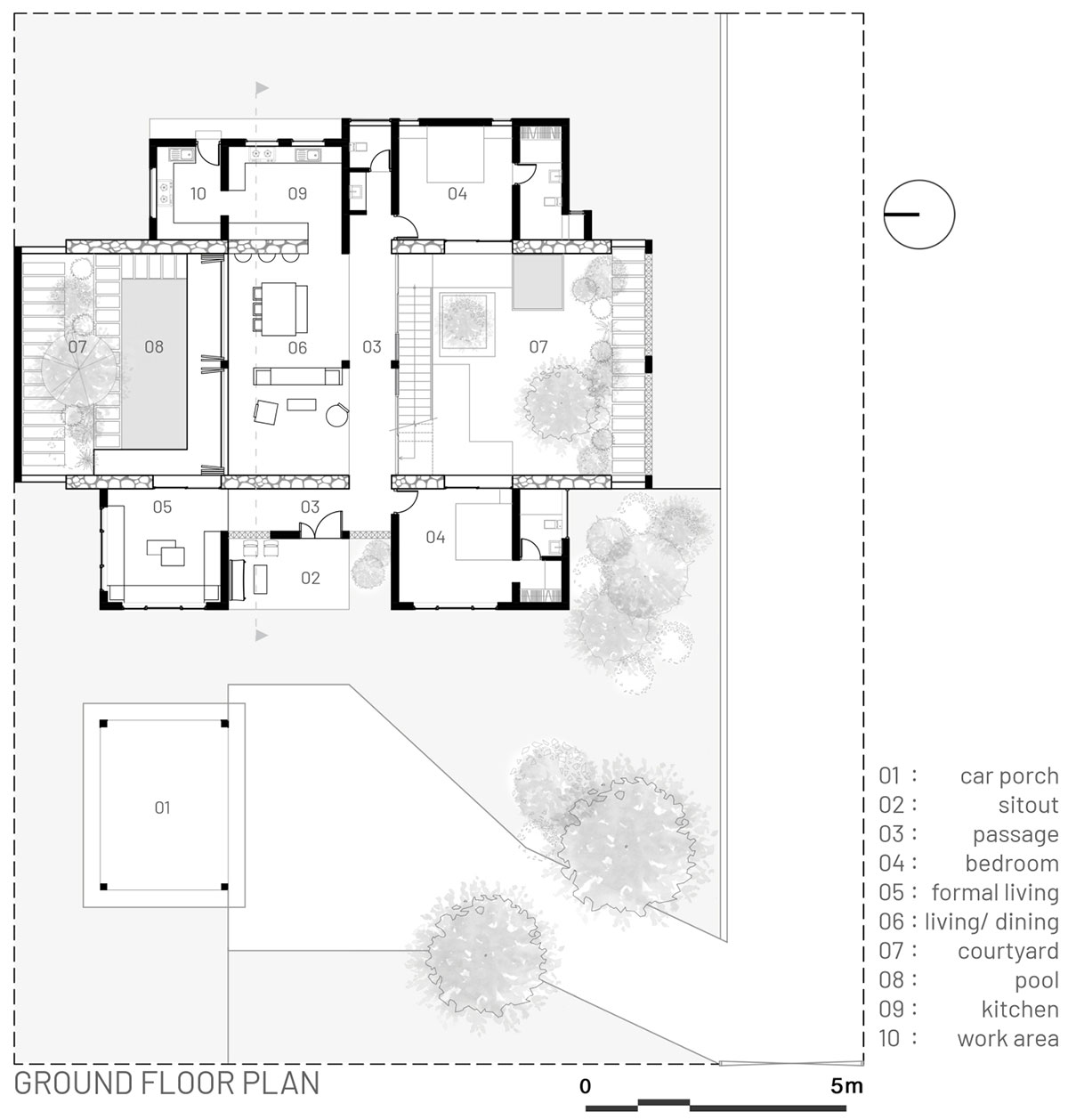
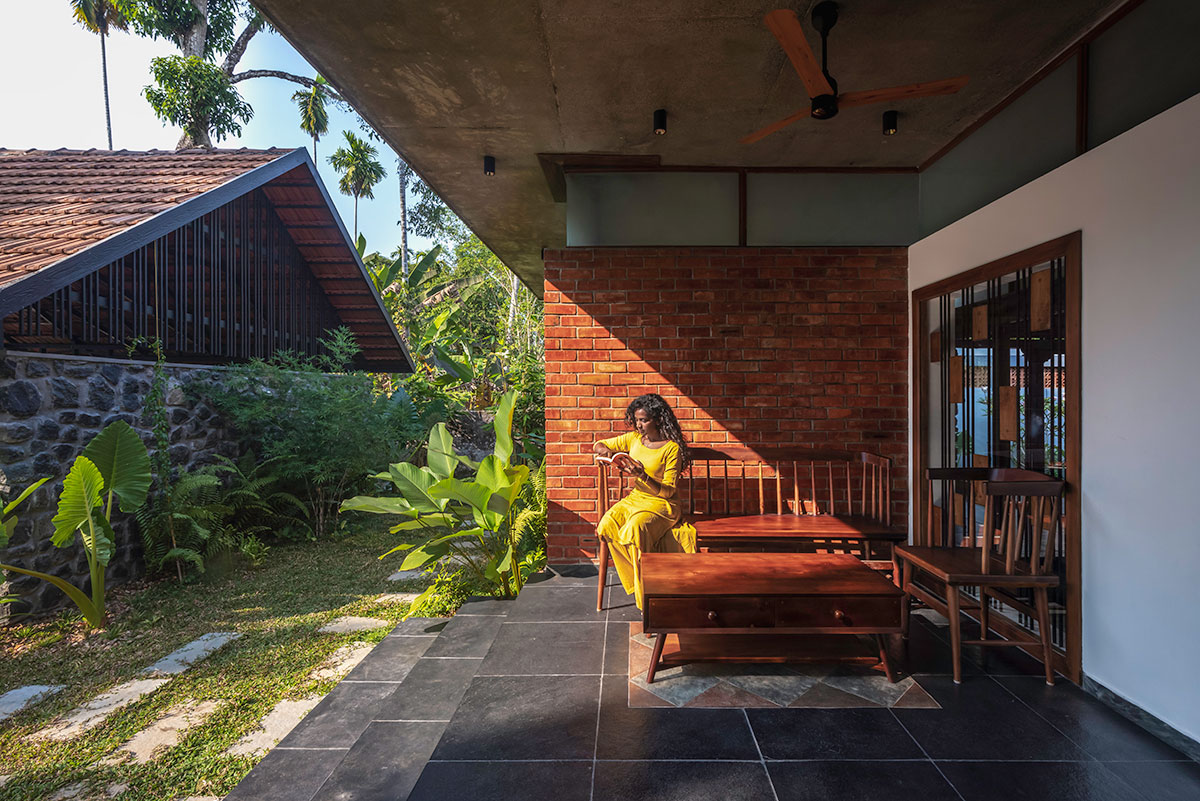
Khayaal is located in a typical residential area, featuring lush landscapes, a humid tropical climate, and abundant seasonal rainfall brought about by the monsoons. An ideology that the firm follows in almost all of its projects is that the materials used become the interior design elements in themselves, without much else added for ornamentation. This concept has been religiously executed in Khayaal too.
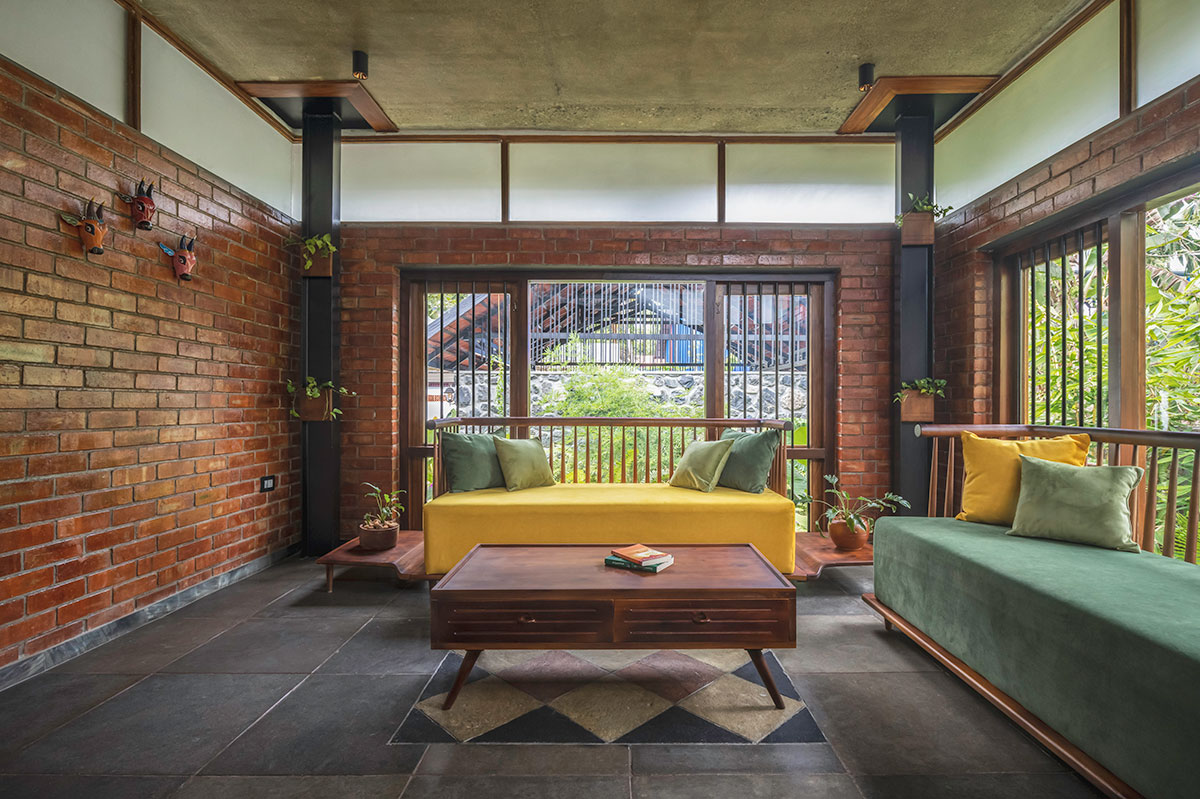

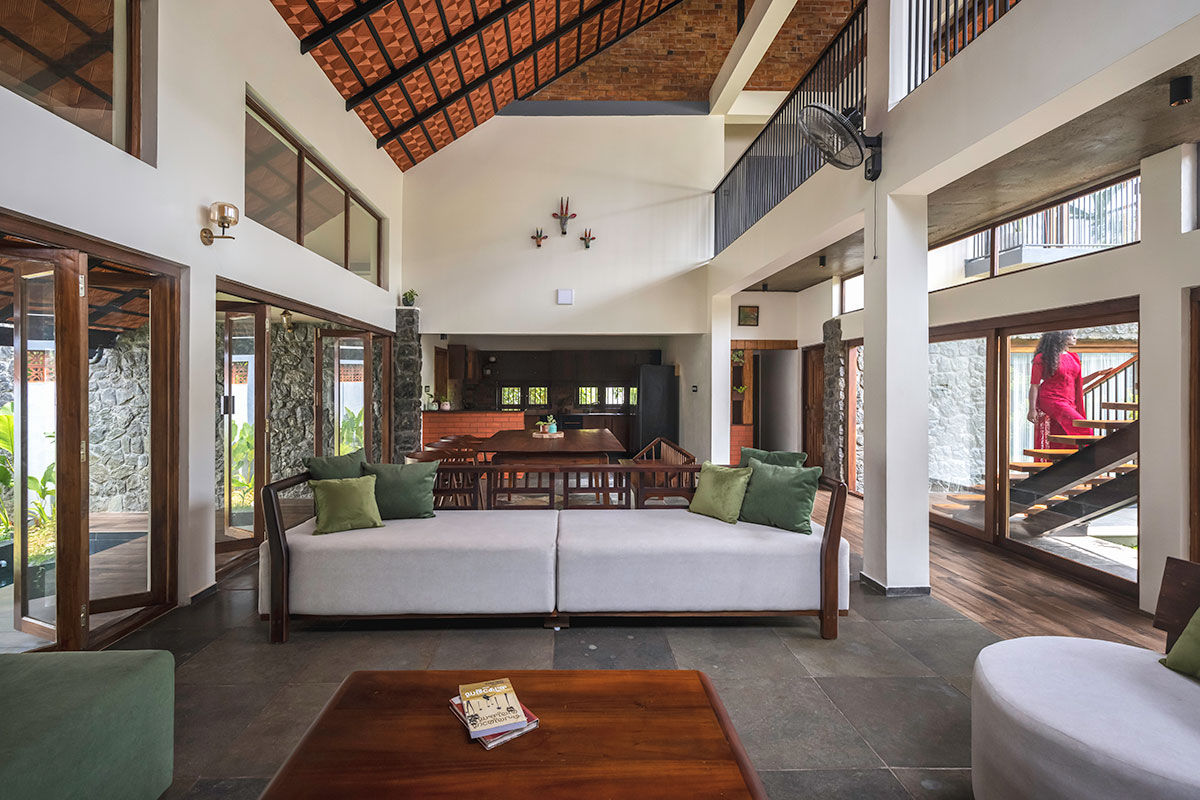
Most of the materials used are earth-derived and left bare viz., fired bricks and rubble for walls, clay tiles for roofing, natural kota stone for flooring and terracotta hurudees are used to show separation. Although glass has been extensively used on facades, they are well-shaded which ensures only filtered sunlight falls inside. These, along with adaptations of Vernacular Kerala architecture concepts such as sloping roofs, courtyards with lush tropical greens, and water bodies have helped in regulating the internal climate within the building to a great extent. The use of diverse natural materials, and its uniqueness in physical and decorative features, leads Khayaal to stand out while adapting to nature.
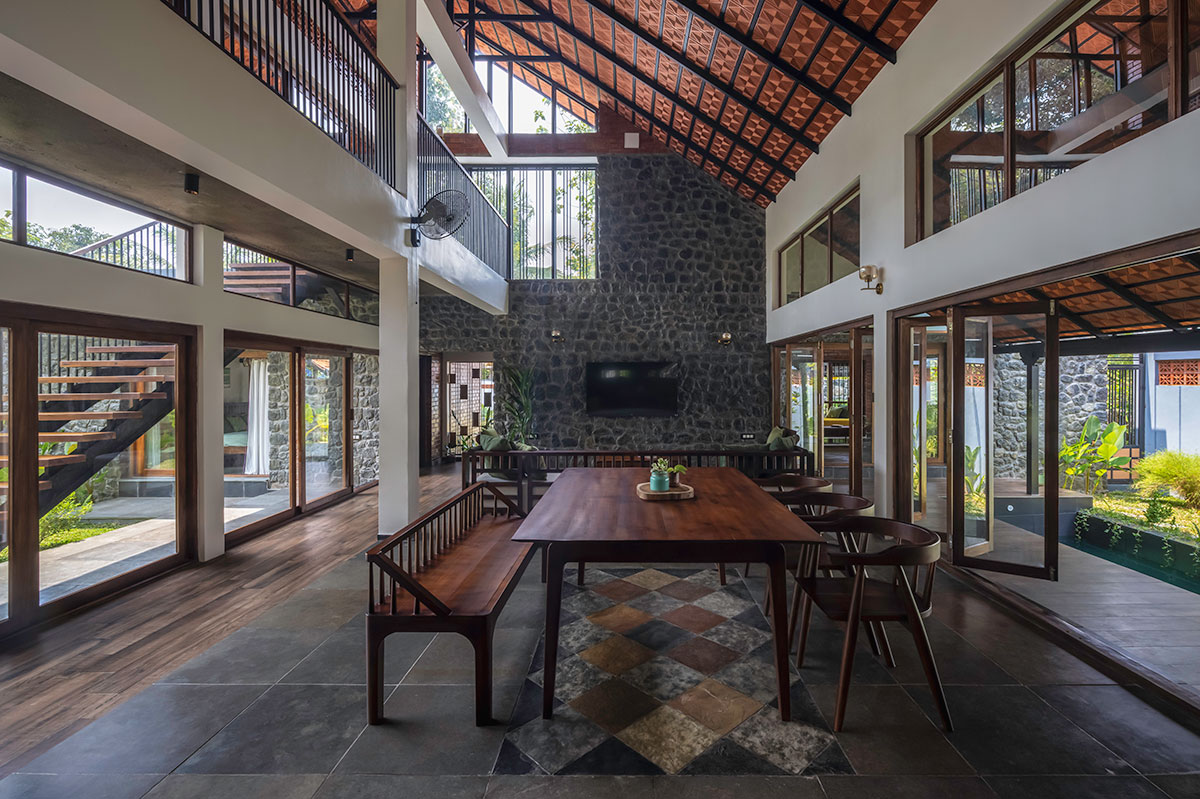
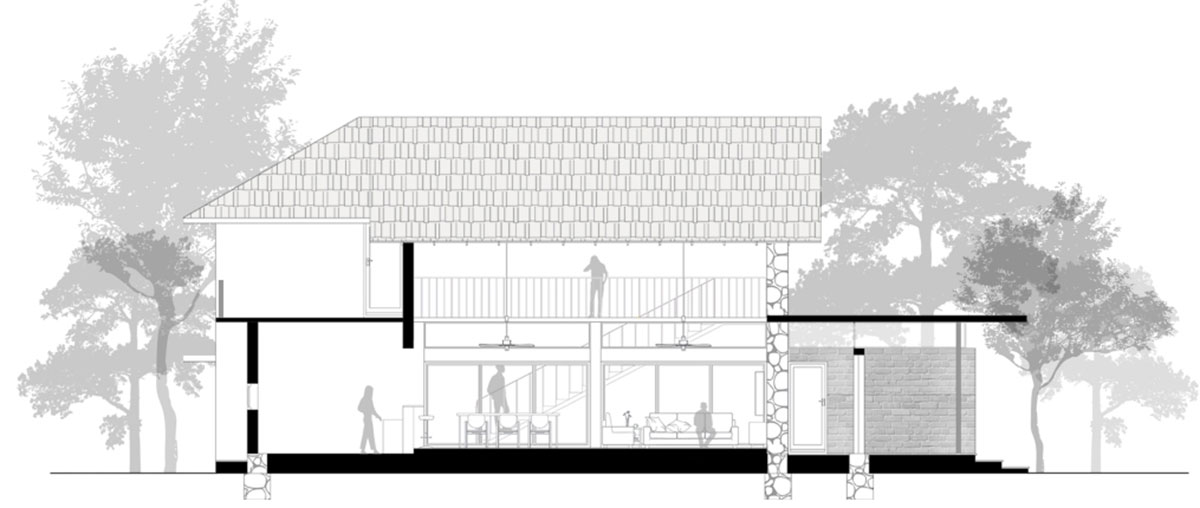
DESIGN CONCEPTS:
Re-interpretation of Vernacular Kerala typology: The design began as a direct response to the prevailing climatic and geographic conditions. This in turn translated as a re-interpretation of the nalukettu typology, where instead of a courtyard at the centre, two courtyards adjoin the central core formed by living-dining spaces.
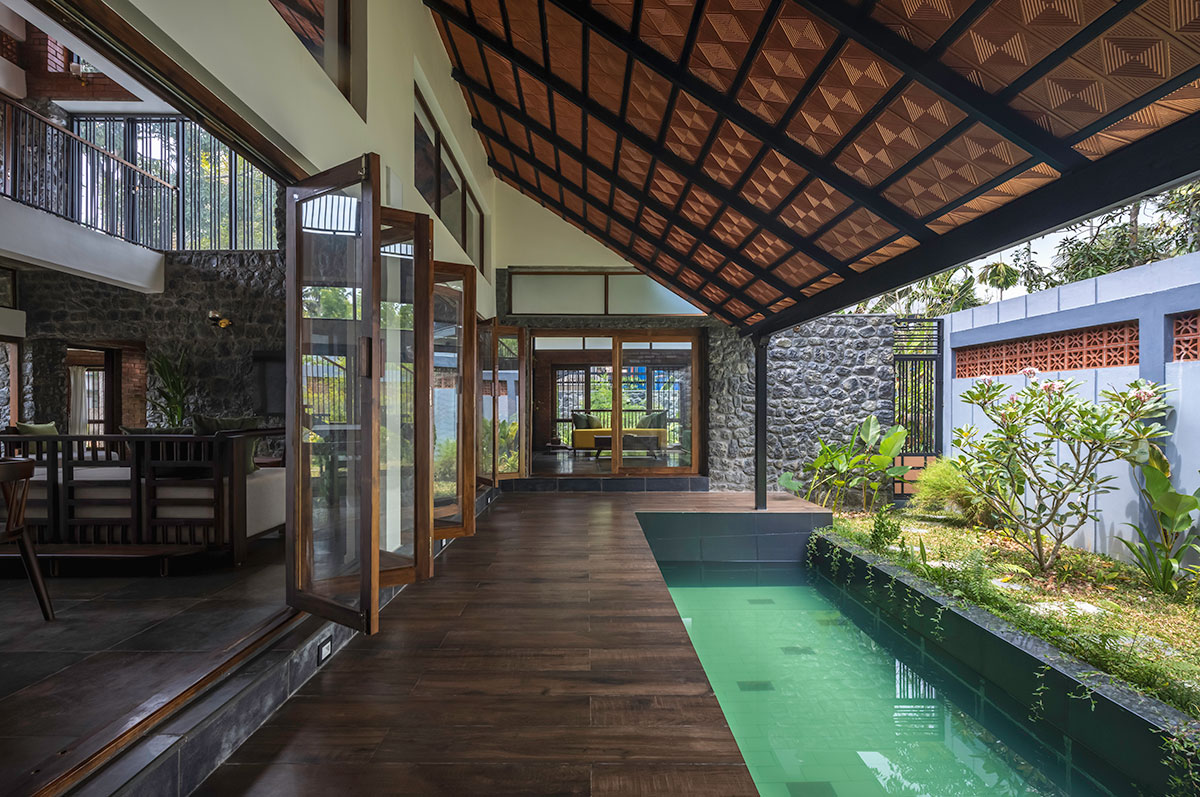
Floating slab: Roofing for the front facade is a floating concrete slab, the load of which is carried by seven I sections. Glass panels are given in between the slab and the top of the wall to give the impression of the slab floating over the brickwork.

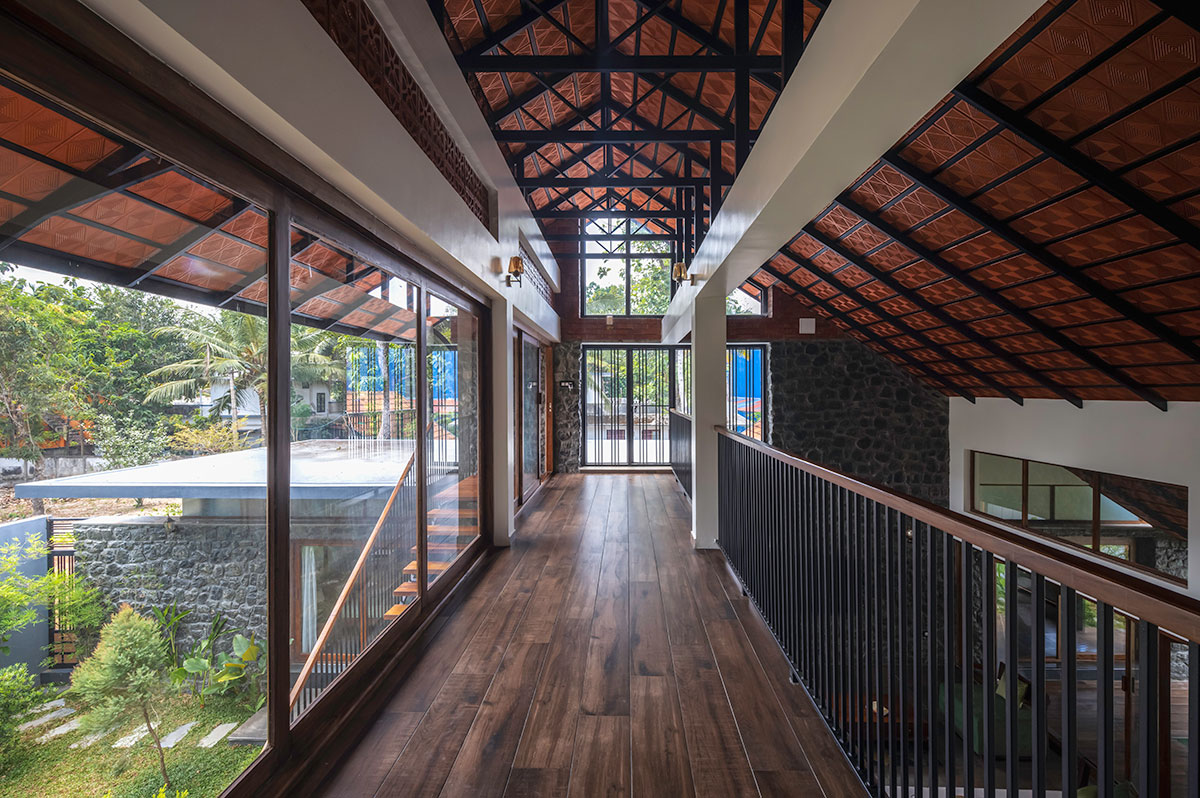
Visual connectivity: Khayaal has been designed to attain strong visual connectivity throughout while at the same time keeping the public space, viz., the formal living, at bay. Being a single-family dwelling for a small, loving family of three, transparency in the semi-public spaces is more of a boon than a concern.
